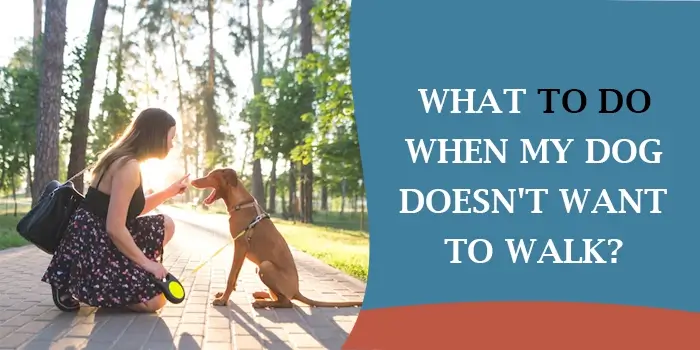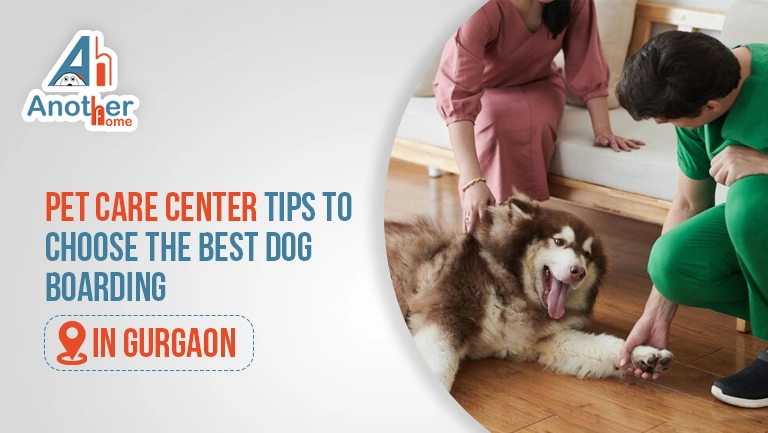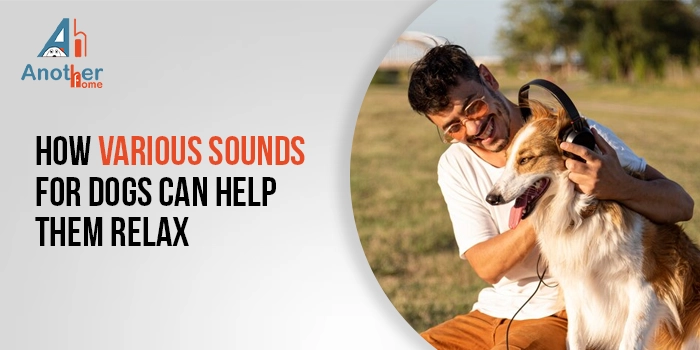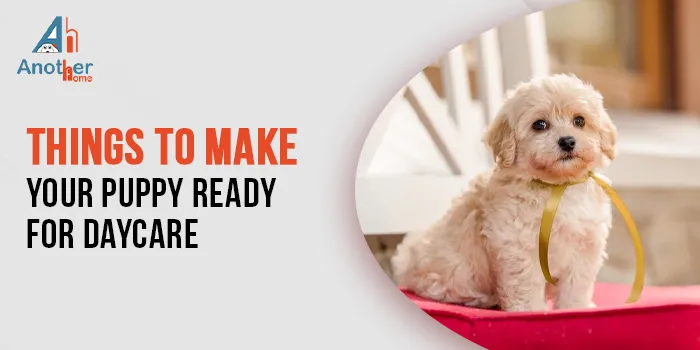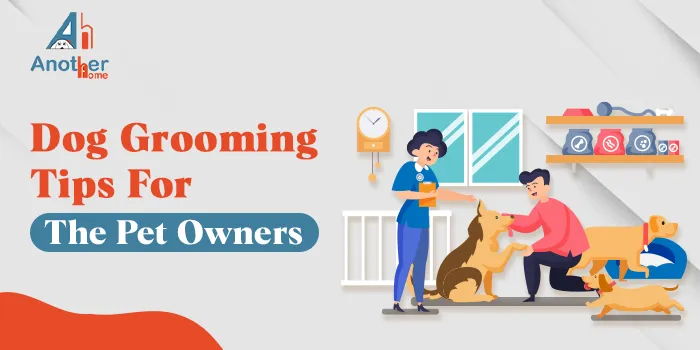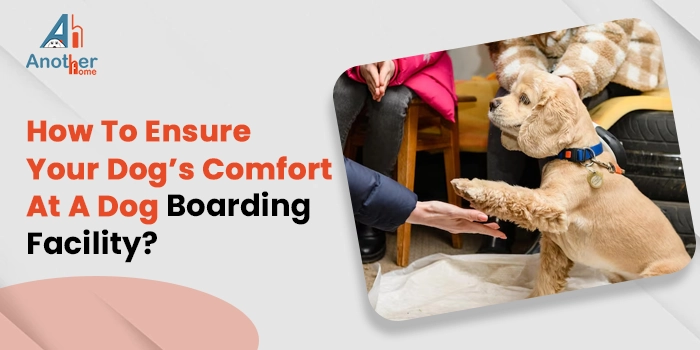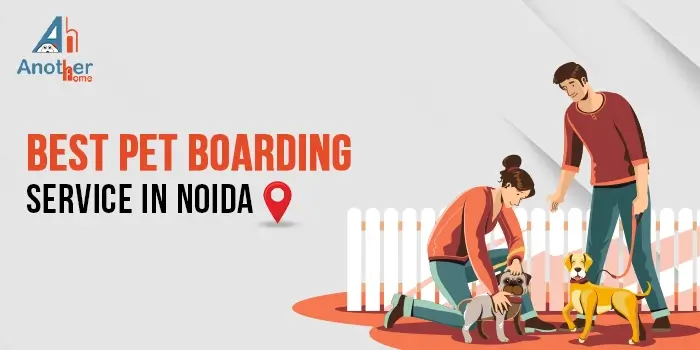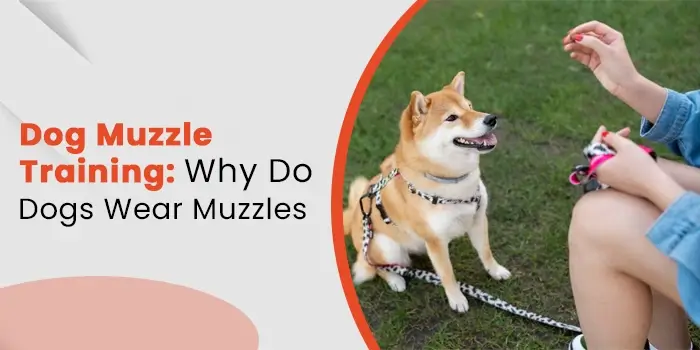Many dogs would jump off their beds and run toward their leash as soon as they heard the word "Walk." But not all five fingers are not equal. The same scenario is with dogs; some dogs may be less thrilled to go on a leash adventure. You must be wondering why my dog does not want to go on a walk. Well, there can be a lot of reasons for that, and if you cannot solve this issue by yourself, you can take the assistance of a dog walking service.
We at Another Home provide services such as dog boarding, dog day care, dog training, dog walking and many more. In this blog, we will discuss the reasons and the solutions for your dog's anti-walking attitude.
Helping The First-Timer Dog Walker To Enjoy Going On Walks
Most often, the puppies are adopted before they even have any leash training, so it is most likely that you need to spend some time training your furry friend. You can teach them to tolerate a collar, harness, leash, and, most importantly, walking.
To start, if you have a puppy or an adult dog, you must have your vet rule out any physical restrictions for dog walking while being leashed. Other than that, as a dog parent, you should look out for any medical conditions limiting the amount of exercise or the activities your dog may participate in. Once your dog can walk safely, introduce them to their partner - The Leash.
Introduce Your Dog To Their Best Friend, AKA "The Equipment"
Before leaving your house, you must get your dog used to a collar, harness, and, most importantly, the leash. Many dog parents start their time with their furry friends by buying a collar, so they may already be used to wearing one. And while starting with a collar is a good option for trained dogs on a leash, a harness is a much safer and more controlled option for the puppies, whether it's rescues, anxious dogs, or just the scent hounds who can take some time off. You can go through the following instructions to get your puppy used to walk:
- First, start by placing the harness and the lightweight leash in an area where your dog usually hangs out to sniff and explore for a few more days.
- Next, you can put the harness on your dog inside without the leash for a couple of days by increasing the time it is on each day. For starters, you can put the harness on for a few minutes, then move to 10, 20 minutes, and so on. Remember to give lots of praise, treats, and cuddles, and engage in a quick play session.
- Once your furry friend gets comfortable with their harness, you can clip the leash to their harness and let them walk freely without dragging it behind them. Remember to supervise them while you can do this exercise, as they might get tangled up and cause an injury or increase their leash wariness.
- You can call your pup and reward them with treats. You can hold the treats out and circle the room; they will follow you and unknowingly walk with you. Next, hold on to the leash.
- Ensure your dog wears gear while you are at home to supervise them and do not leave them in a harness or leash when you are not there. If you have a chewer on your hands, it might get caught onto something and startle your dog or, worse, pose a choking hazard.
Common Causes And Solutions For Dogs Who Don't Go On Walks
There can be a lot of reasons why a dog doesn't want to walk. On the brighter side, if you can identify the early-stage triggers, you can learn how to minimize them and reintroduce a walk positively. Here are some of the most common causes and solutions to why a dog may not want to go for a walk.
1. The Leash Pressure On Their Neck Intimidates Them
We know the discomfort around our necks when we wear a turtleneck sweater. Now you know how your furry friend felt around the heavy object attached to their neck. It can cause them discomfort, and they might try to get out of it, which may result in some injuries, so you better be careful around it.
Solution: You can attach your leash to a harness rather than a collar, as a harness can distribute the pulling to the chest and body rather than the neck. This is important for miniature or brachycephalic breeds that may suffer from breathing difficulties or tracheal collapse.
You can try our services. We at Another Home offer dog walking services and other activities to make them active.
2. Your Dog Doesn't Like Leashes, Harness And Collars
As you can probably imagine, heavy leashes and tight collars or harnesses are not the most comfortable thing to wear. But there are several ways by which you can get your dogs to get used to their collars or leashes.
- As a dog parent, you can try out different collars or harnesses alongside a lightweight leash to see what your furry friend likes better. Some harnesses can rub too much under a dog's arms or may fit awkwardly, and you can try out different materials of collars or leashes that could also fit or may feel different.
3. Your Dog Maybe Anxious
Anxiety is one of the most common reasons most dogs do not want to walk. They might be scared of the leash and the outside world, cars, noises, or people and pets may encounter. They could even have an experience on a leash that might scare them. Signs of a fearful and anxious dog can be cowering, panting, whining, trembling, peeing here and there, or trying to escape.
Here are some cautions you can take:
- Take walks at different times during the day or night when various factors can be at play to narrow down the culprit in the early morning and the late evening. Also, there may be fewer noises or people.
- Ensure to constantly reward your dog for helping them replace negative associations with positive ones. You can treat and praise them during their steps, including getting their equipment on, clipping on the leash, stepping outside the door, and every few steps alongside your walk.
- You can desensitize your dogs by giving them repeated exposure with many rewards, but you must go slow and gauge your dog's reactions and retreat whenever they get too anxious. You want them to feel safe and reward them even if they look at the sidewalk.
4. Your Dog Might Be Hurting
Many dogs refuse to walk or even leave the bed when they are in pain. It may look like an obstinate hesitation, but your dog asks for your help. Overweight dogs may be experiencing pressure on their joints from the weight that can be painful, and you have to start slow.
- As for the solution, you can talk to your vet, who can examine your dog and diagnose any injuries, arthritis, or other issues that your dog may have. They can also work on a treatment and exercise plan that works for them. Most of the time vet can prescribe pup-safe NSAIDs such as Rimadyl for joint pain or minor injuries. You should never give a human painkiller to your dog ever, and if your dog is in pain, then you leave them alone until they are feeling better to walk.
5. Your Furry Friend Has No Experience With Leashes
Inexperience with leashes is common for rescues with a history of neglect. It would help to treat inexperienced pups like a puppy, regardless of age.
- Ensure to follow the steps mentioned above to train your puppy. But, you must be extra cautious about signs of fear or anxiety. If your dog is agitated by putting on the harness or the leash, retreat a step or two and repeat, getting used to each piece until your dog is comfortable. If their anxiety seems to be triggered, you need to take a step back and pay attention to all the factors involved to try and narrow it down, such as loud noises, strangers, textures of grass & sidewalks, etc.
6. They Are Satisfied Where They Are
There are a few similarities between a dog and a toddler. If they seem to have fun, they do not want to leave, or they will throw a tantrum. He was bucking, pulling, and putting on the brakes as they may do anything to keep you from dragging them away.
- Do not plaster them with treats or make a fuss about it. All you have to do is face away from them until you get their attention.
- Many dogs can get sleepy just after having a meal. So, take them for walks before meals when their energy level is higher.
While you can resolve most of these issues at home with patience, love and persistence, some dogs may require a little help. That is why you should seek dog training services to help your dog walk.
DIY Hacks For Older Dogs Who Do Not Want To Walk
Suppose you have an older dog who suddenly stops wanting to go on walks or seems stuck in its sedentary ways. All of a sudden, if they stop going for walks, you should have them checked to see if any medical reason is involved, such as arthritis, dementia, or fatigue that may come with your old age. Another Home provides dog-related services, and if your dog does not want to walk and you are searching for a dog walk near me, you can take them here as we provide dog walking service too.
Here are some extra tips for getting your older dog interested in walks:
- Introduce your leash slowly at home, and consistently practice the leash.
- Take help from your neighbour's puppy to coax your dog to go on a walk.
- Ensure to reward your dog at the end of the walk, along with a cuddling and grooming session that your dog may enjoy and can look forward to.
- Do not use prong, shock, vibration, or matching collars like your teaching tools.
- Other than that, you can also use high-end treats and toys while encouraging walks.
- Work on the leash when your dog is well-rested.
- Train in warm, dry weather as well as cold and wet weather, which can cause arthritis flare-ups and may make your senior dog less likely to cooperate. Severely cold weather can also be uncomfortable for older dogs as they cannot keep warm. So, if you want to go for walks, you must dress your dog warmly in a sweater or jacket.
- Please be gentle with your leash and never jerk or pull it aggressively.
- Most importantly, be patient with your dog as they may walk slower and take more time to get comfortable with their leash.
Keep Your Walks Exciting With Your Dogs
Once your dog is interested in walking, do not kill their vibe. Keep the walk exciting, so your pet won't get bored. Here are some tips to keep your dog excited about the walk:
- Take a different route than always, and mix it up.
- Walk with a friendly pup to give your furry friend a walking partner.
- Join a dog walking group to add more socialization for your dog.
- Take your dog to a dog park as a special surprise.
- Add some games between the walks to increase your furry friend's excitement.
Conclusion
There are multiple reasons why your puppy may have stopped walking. In this case, you can either help a dog walking service or try to get your pet to walk with you at home. If they are not stopping for the above reasons, your puppy might have popped and need a moment to recover.
When it comes down to caring for your furry friend, you always want the best services for them. Another Home is one of the finest pet boardings, providing boarding, daycare, and grooming services for your adorable pets.
Suggestion Reading: Reasons To Walk Your Dog Everyday

